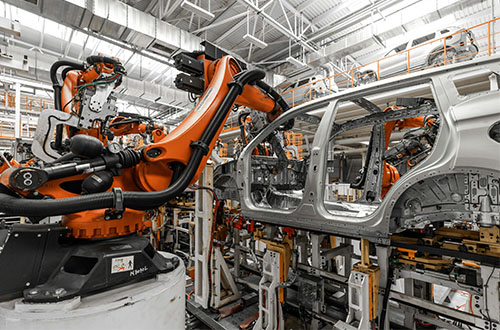

Can Your Business Come Back Stronger After COVID?

In the years prior to COVID-19, many businesses were reluctant to fully commit to digital transformation and cloud modernization. Reasons ranged from leadership concerns over business disruption to internal staff inertia, as well as worries about cost and the potential risks involved in restructuring internal and external business processes.
With all these excuses to stall, prior to 2019 the majority of businesses and public sector agencies were taking baby steps towards a future in the cloud. Then the global pandemic struck and we saw a sudden haphazard rush towards digital modernization.
COVID-19 created a clear divide, one in which early technology adopters were the clear winners and the slow movers suddenly saw their businesses on the line. Companies that had been reluctant to commit to digital transformation were forced to reimagine their future both in the current crisis and its likely aftermath.
A survey by IBM’s Institute for Business Value Trending Insights bears that out, revealing how COVID-19 and the resulting business challenges accelerated digital transformation and propelled companies towards modern cloud technologies. 59% of surveyed organizations ramped up their pace of digital change, while 66% finally executed digital initiatives that had previously lingered on the back burner.
As organizations face compulsory migration towards online platforms and remote work, the need for agile, scalable technologies and adaptive security available only in the cloud continues to push both the private and public sector towards digital transformation.
Why companies need digital transformation and how it will shape our future
The road to our digital future is increasingly clear, with a variety of initiatives now underway in both business and the public sector to bridge the technology gaps that hamper adaptation and innovation.
The irony of many organizational leaders’ reluctance to modernize is that by far the biggest beneficiaries of this transition are businesses, with customers who were initially driven by pandemic protocols still continuing to flock to digital platforms. If history teaches us anything, it’s that customers aren’t likely to abandon any behaviors that make their lives easier.
There are a host of internal business benefits to be reaped as well. Cloud modernization lets you leverage real-time big data from cloud data platforms; vital information that can be used for AI, analytics use cases and proof points that enable truly data-driven planning and decision-making. By amping up your technology you can end-run business challenges that have come into stark relief during the pandemic, including many organizations’ inability to evolve fast enough to meet customer needs and expectations.
The bottom line? Businesses will have no choice but to innovate at an even greater pace to keep up, because if they don’t, their competitors will.
Economic pressure can make diamonds for business
The economic downturn has also had a dismal impact on business. Cost-heavy production, along with a logjammed supply chain and its associated costs, including overtime, duplication and dried-up sales all stifle growth, along with consumer confidence, making a vicious economic circle.
What markets demand today is an agile, cost-effective business model supported by an interconnected value chain. Leveraging digital transformation to gain capabilities while minimizing ongoing costs such as licensing and expensive data centers is a powerful strategy to achieve these goals.
The competition is responding-are you?
In all these dark clouds there is a clear silver lining, as more organizations embrace digital transformation and cloud migration to streamline their business processes. A McKinsey global executive survey reveals many responded to the pandemic by accelerating digitization of internal operations and customer and supply chain communications by three to four years, while integration of digital or digitally-enabled products sped up by a whopping seven years.
These same executives reported they were able to drive such unprecedented successes by positioning these investments in technology as a strategic asset that would empower them to respond to current and future challenges-and it has. Moreover, the executives who dealt most successfully with the crisis were those who built a mix of technology stacks others didn’t have. The majority of respondents also reported their businesses ultimately decided to double down on their initial digital adoption investment.
This survey makes clear how the fast pace of digital change is reshaping businesses going forward. As McKinsey points out, “We know that at leading companies, digital and corporate strategies are one and the same." The downside? If you’re not one of these digital leaders, you’re likely about to get crushed by one.
Moving forward, and upwards
As the final wave of the pandemic appears to be breaking and it’s now time to deal with the rubble of our economy, we see more businesses moving turning towards digitization. Consumer migration to online interaction and buying platforms, along with companies’ increasing reliance on remote work, mean leading edge technology has become a critical asset.
What’s more, this sea change in how we do business will progressively create new and greater challenges for organizations to meet market demands that increasingly depend on digital capabilities. At the same time, as competitive technology levels the playing field, it’s a huge opportunity for smaller up-and-comers-at least those with vision enough to seize the moment.
COVID-19 has wrought abrupt change to businesses and agencies around the world. Today, the odds of winning out over the competition are contingent upon an organization’s speed in revamping their technology stack to meet evolving market patterns and customer needs.
Leading market research indicates that, as difficult as the past couple of years have been for business, the drive to innovate and step up their IT game is a clear dividend. Companies that seized the opportunity to adapt by moving to the cloud are now benefitting from lowered infrastructure costs, plus turn-on-a-dime agility and scalability-a critical competitive advantage.
As never before, a business’s ability to adapt and to keep ahead of the market is a key determining factor in its future success or failure.
The pandemic is forcing companies to adapt and upgrade their technology, including migrating to the cloud, or face the consequences. mLogica offers technology that lets you modernize your distributed and mainframe workloads to the cloud in one-third the time and half the cost of traditional migrations.
For more information, contact us at Modernize-Now@mLogica.com.








































